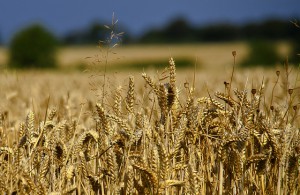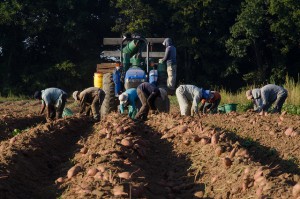Response to The Lower Productivity Of Organic Farming: A New Analysis And Its Big Implications by Steven Savage
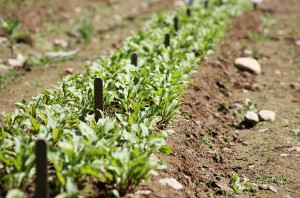 Photo credit: Sterling College
Photo credit: Sterling College
Dr. Steven Savage's analysis of USDA agricultural survey and census data highlights the yield gap between conventional and organic production. Unfortunately, he fails to take a deeper look at the historical context behind his results and solutions that could increase the land-use efficiency of organic agriculture while simultaneously benefiting the health of humans and the environment. Dr. Savage’s fatalistic viewpoint that the United States agricultural system is static suggests that the negative consequences of high-input, large-scale conventional agriculture are unavoidable, and should simply be accepted. This perspective overlooks the innovation that is innate in organic practices, and the multiple benefits that could be achieved through increased organic research – for both higher yields as well improved sustainability and health.
Historically, applied organic agriculture research has been drastically underfunded, while decades of research and billions of dollars have been invested towards increasing yields in conventional farming systems. Organic growers are faced with many of the same large-scale challenges as conventional growers, but the lack of investment in research has left them with a limited number of agronomic tools. This lack of funding has had a very real impact on organic producers, and translates into the yield gap highlighted by Dr. Savage. For instance, organic growers often have no choice but to plant crop varieties that were developed specifically for conventional cultivation. Of course when these crops are grown without intensive use of insecticides and herbicides, the environment they were bred to thrive in, yields are reduced. Recent research out of the University of California, Berkeley, further supports this notion, suggesting that the yield gap between organic and conventional could be decreased or even eliminated entirely through the use of best management practices and increased research.
Policy makers have begun to note of the importance of organic agriculture research and as a result funding has begun to increase over the past few years. However, the proportion of research funding going toward solving challenges in organic agriculture is still disproportionately small. For instance, of the $956.4 billion allocated over a 10-year period in the most recent farm bill only 167.5 million over a 5-year period directly funds organic agriculture research. This means that only 0.02% of the Farm Bill funds organic agriculture research. Even when programs that are unrelated to agricultural production such as SNAP and WIC are removed from the total budget, organic agriculture still receives less than 1% of the total funding.
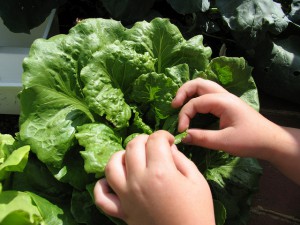 Photo Credit: Arlington County
Photo Credit: Arlington County
In spite of low levels of investment the organic sector has already begun to experience the benefits of investment directed toward overcoming challenges to organic production, and the development of methods for reduced tillage, organic compliant methods to combat pathogens, and crop varieties that are resistant to herbivory and weed pressures have enabled the organic sector to grow rapidly. With continued funding, more tools will continue to be developed allowing organic farmers to produce yields on par with those of their conventional counterparts all the while providing clear benefit to the environment and human health.
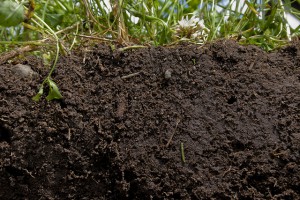 Photo credit: Natural Resources Conservation Service Soil Health Campaign
Photo credit: Natural Resources Conservation Service Soil Health Campaign
When considering the health of the environment land-use efficiency is just one piece in a complex system. Environmental sustainability is a critical component in the development of organic practices and numerous studies that directly compare conventional and organic agriculture directly support the environmental benefit of organic farming. When calculated on a per acre basis there is no question that organic agriculture far outperforms conventional agriculture when it comes to fossil fuel usage, greenhouse gas emissions, and water pollution. Additionally, it is well established that organic farming practices are superior when it comes to building soil health, supporting biodiversity and reducing chemical inputs. By shifting a portion of research funding from chemically intensive conventional cropping and investing in increasing organic yields we have the potential to unquestionably improve the health of our planet.
Furthermore, in any industry, production and profits should never take precedence over human health. Humans directly consume only 1/3 of all calories grown per acre in the U.S. yet 1 billion pounds of pesticides to crops to increase yields. This practice is to the detriment of thousands of farm workers, their families and surrounding communities. For instance, studies show that exposure to pesticides has immediate and long-term negative effects on human health. Immediate impacts of acute exposures vary from skin and eye irritation to vomiting or respiratory distress. Countless scientific publications have linked pesticide exposure to negative health outcomes and have provided strong evidence that, over time, exposure to certain pesticides is associated with serious illness including cancer of the prostate, colon, lung, and pancreas, as well as non-Hodgkin lymphoma. Studies have linked prenatal exposure to pesticides to lower IQ, cognitive disabilities, attention deficit disorder and hyperactivity later on in life and pesticides can be carried into the community via clothing, shoes and low-level drift.
Finally, while the development of agricultural tools and techniques that are prohibited by the USDA organic standards, such as those involving the use of most synthetic pesticides, cannot by utilized by organic growers any advancement in organic compliant techniques can be incorporated into conventional
 Photo credit: Nicholas A. Tonelli
Photo credit: Nicholas A. Tonelli
management schemes. Already, organic agriculture research has demonstrated some surprising results that will likely be of benefit to all farmers. For example, it has been clearly demonstrated that the productivity of organic farms is positively correlated with time meaning that the longer farmland has been in organic production the higher the yields. This means that by there is a possibility that, by using holistic techniques, yield could be increased without the need for synthetic chemicals potentially reducing the need for costly inputs. Furthermore, research suggests that organic techniques could be useful in counteracting extreme weather events. In times of drought, for instance, organic farms growing corn and soybeans have been shown to outperform conventional farms. One example of this is likely reflected in the Dr. Savage’s analysis of state by state corn production where in Montana, a state that has been experiencing drought for the last two years, organic corn has higher yields than conventionally grown corn.
Dr. Savage’s analysis points out areas where improvement is needed in our agricultural system. We encourage him and others to use this as an opportunity to call for increased research on organic systems to develop tools that can be incorporated into both organic and conventional agricultural systems and which maintain long-term environmental sustainability and promote human health.

